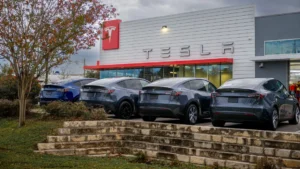In search of price discovery, Pilbara Minerals restarts BMX auctions while Albemarle puts its own spodumene under the hammer
PLS pulls in US$1200/dmt on a 6% Li2O basis for a 5000t cargo, well above current spot prices
International Lithium Association launches guidelines for lithium carbon emissions
Lithium producers have long complained that machinations in China — some going as far as to claim price ‘manipulation’ — have helped to depress prices in a bid to help electric vehicle producers in the famously opaque Middle Kingdom.
How did they break that last time there was a lithium boom? Pilbara Minerals’ (ASX:PLS) Battery Material Exchange.
Marketed as an opportunity to deliver transparency on the real value of spodumene, the auctions saw a mountain of buyers, often small converters without their own spodumene supply, compete for minor cargoes from the Pilgangoora miner.
Stepping back into the bygone days of July 2021, PLS’ first auction pulled a bid of US$1250/t for a 10,000t cargo of 5.5% Li2O concentrate.
That was, at the time, a record for SC6 spodumene. In the first boom that wrapped up in 2017-2018, prices in the then much smaller market peaked at US$1000/t.
By November 2022 auction prices had peaked at US$7805/dmt for SC5.5, equivalent to a 6% benchmark price of US$8575/dmt.
Then after two more sales, the last based on lithium hydroxide tolling, the BMX platform news was no longer reported. With prices beginning to fall, a cynic could certainly suggest as demand dropped the ‘price discovery’ value to miners fell as well.
Now, miners have re-fired, in the hopes of pulling higher prices after spodumene collapsed to US$850/t earlier this year. Fastmarkets most recently reported SC6 prices of US$950/t.
But yesterday’s most recent BMX auction showed PLS is back chasing prices that go beyond spot.
It accepted a pre-auction offer for 5000 dry metric tonnes of 5.5% Li2O con at US$1106/t, equivalent to US$1200/dmt including grade adjustments and freight.
PLS says future spot sales via the BMX this year are unlikely given most of its output is allocated.
“For any future unallocated production, the Company will continuously review a variety of sales avenues including; offtake contracts, closed tenders, auctions and other commercial opportunities to maximise value creation for our shareholders,” it said in a statement.
Pilbara Minerals (ASX:PLS) share price today
More miners following Pilbara’s lead
After producing ~620,000t in FY23, PLS is planning to increase its production capacity to 680,000tpa and then again to 1Mtpa by late 2025.
It has already seen strong demand from large Chinese converters, with deals announced that could see Ganfeng, Chengxin and Yahua take up to 620,000tpa in 2025 and 2026.
Another 300,000tpa is expected to be placed in a strategic partnership that could include downstream initiatives.
But to think the industry will settle down on public spot sales if Pilbara doesn’t re-fire its platform wouldn’t be correct.
In fact, US giant Albemarle, the worlds largest lithium producer and owner of both 50% of the Wodgina JV and 49% of Greenbushes, says it will run a spot auction through MetalsHub on March 26.
10,000t of chemical grade spodumene is up for grabs for invited bidders.
In a letter to customers it said the ‘digital event’ would help explore price discovery.
Given the role the BMX platform played in spurring higher spot prices in the last boom, these sales could well flow through to indexes and higher prices for other Australian spodumene producers.
“Albemarle is hosting these digital sales events as a channel to explore price discovery while ensuring a fair and transparent process for all customers,” the letter said.
“The MetalsHub platform will enable out customers to take part in this bidding event.
“Albemarle’s objective is to allow our customers to tell us what they consider he appropriate price to be through private bids.”
Other lithium execs, including MinRes higher-ups and Liontown Resources’ (ASX:LTR) Tony Ottaviano, have previously expressed discontent with the limited trades on which prices move in current mechanisms.
They have also grown concerned that futures traded by Chinese investors are having an outsized impact on sentiment.
Albemarle’s auction has already got tongues wagging.
As I mentioned in the panel discussion at @BMO a few weeks ago, over the past 6 months I have heard multiple #lithium CEOs discuss their dissatisfaction with current pricing mechanisms. Glad to see $ALB join @PilbaraMinerals in taking action for better price discovery. $PLS pic.twitter.com/15FByhNQJj
— Joe Lowry (@globallithium) March 13, 2024
Lithium market evolving with product guidelines
Meanwhile a cross-industry group has developed what it says are the first guidelines for calculating the carbon footprint of lithium chemicals made from brine and hard rock deposits.
Chaired by Albemarle’s Mark de Boer, the International Lithium Association sustainable lithium sub-committee has rolled out the guidelines to provide a standardised assessment of the carbon intensity of lithium products.
That will help OEMs which may have manufacturing emissions intensity targets as well as governments seeking to develop legislation or price carbon on products which are subject to border adjustment mechanisms.
De Boer said the intent of the group wasn’t to establish a standard for a ‘green premium’, something which has proven elusive so far for miners in the west concerned OEMs will accept cheaper battery metals made with allegedly weaker environmental standards in China and Indonesia.
“I can’t give a yes/no answer obviously to a green premium,” De Boer said.
“You will understand that because there’s so many shades of grey, however if you now have this level playing field — one way to determine what the product carbon footprint is and later on what a water footprint will be — what you will indeed see is the creation of objective comparisons.
“You may know that Benchmark for instance already creates these industry carbon distribution curves, the same thing can be done with water, but in the future, as Benchmark has been collaborating in this effort, we can know increasingly for sure that these comparisons are being made on the same basis.”
The ILiA’s Roland Chavasse said the lithium industry was following similar guidelines developed by the Nickel and Cobalt Institutes.
De Boer and Chavasse maintained the guidelines were ‘geographically agnostic’, saying they were not just developed as a marketing tool, but could be used for customers to make informed decisions on sourcing their lithium and legislators to do the same with crafting and administering policy.
The post Pilbara Minerals’ trendsetting lithium auction is back, baby! Can it heat up mild spodumene prices? appeared first on Stockhead.






















